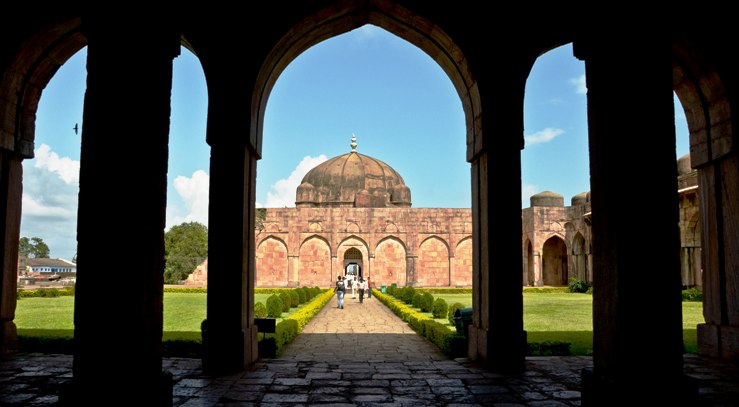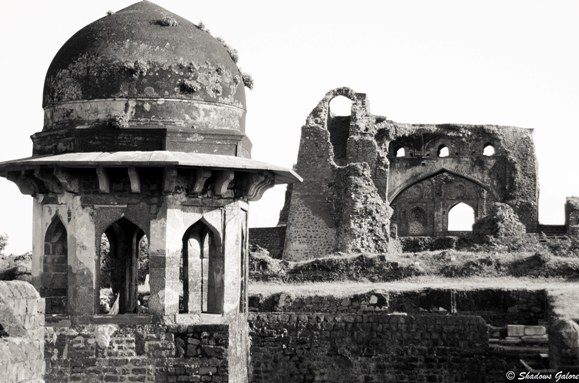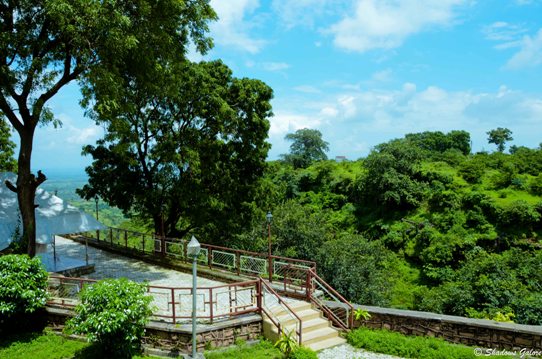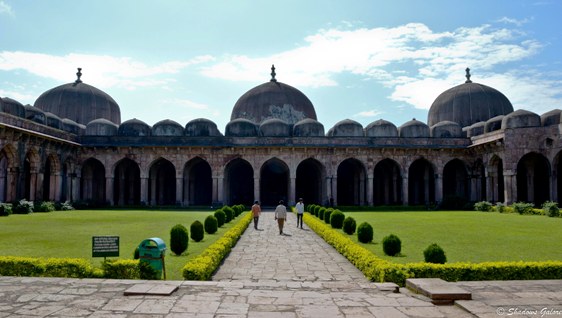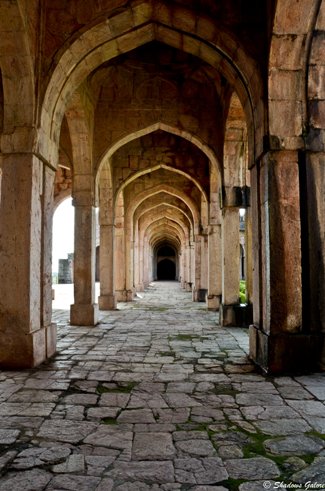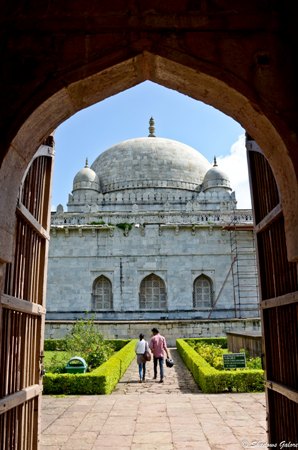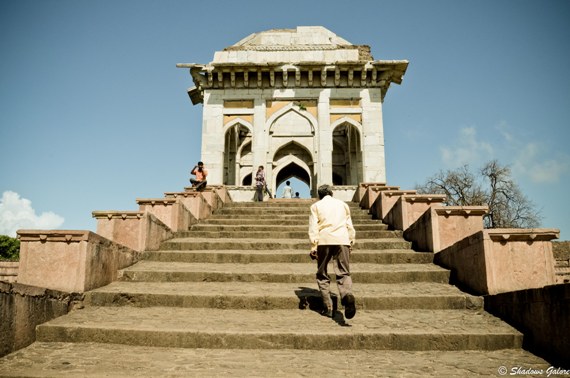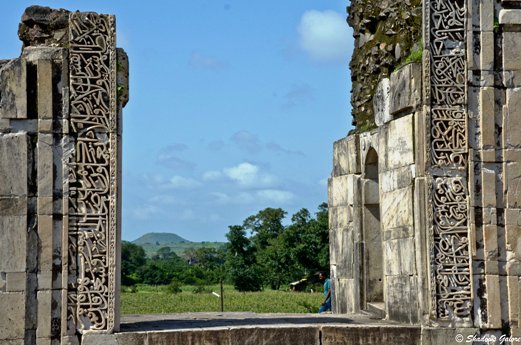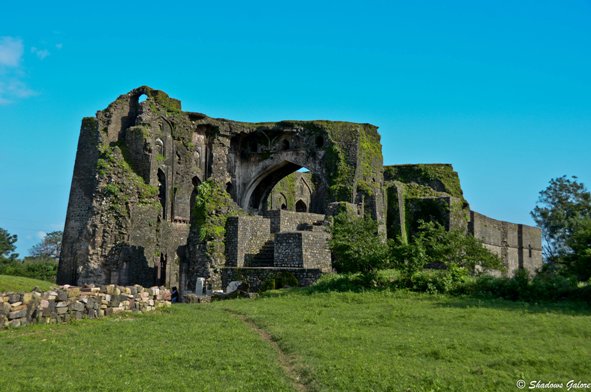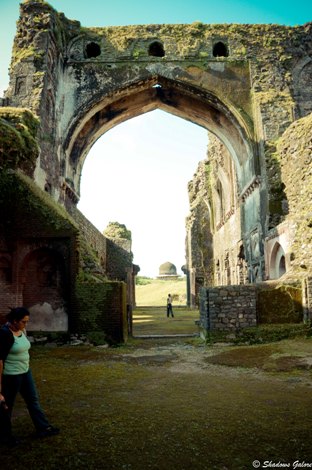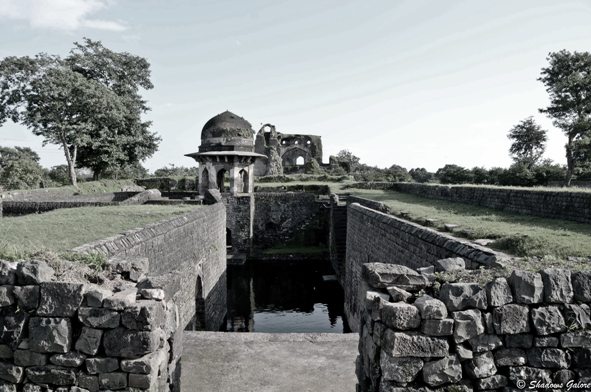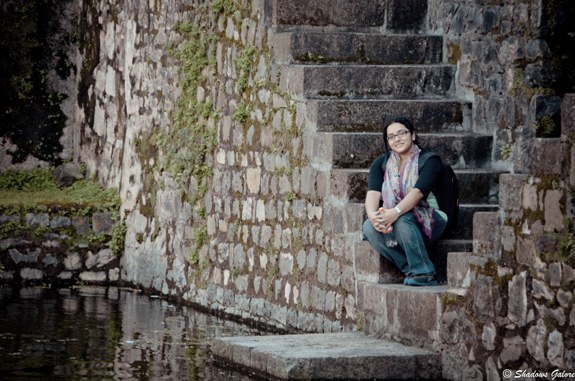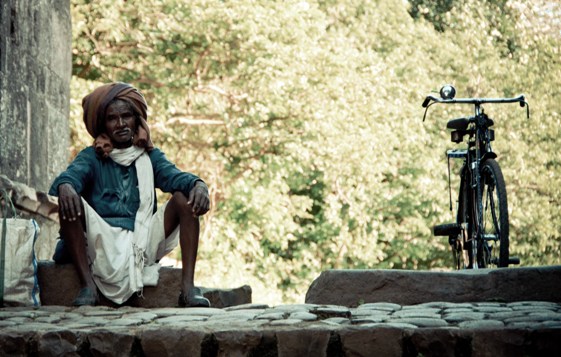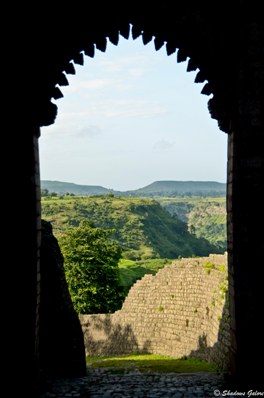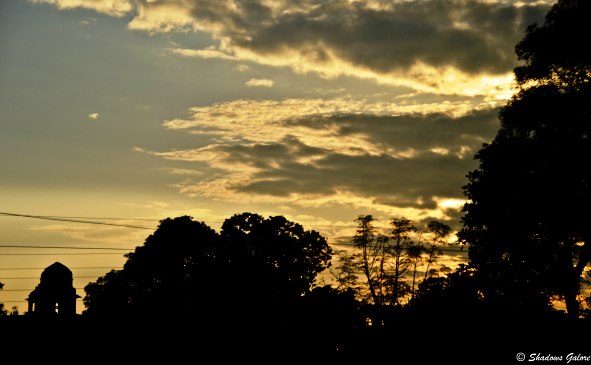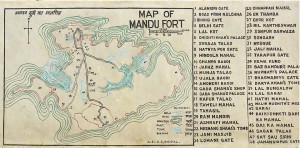“When you set out on a voyage to Ithaca, pray that the journey may be long; full of adventure, full of knowledge.” Our most recent trip to Mandu was exactly how Cavafy wished one to be, full of adventure and learning.
I had first heard of Mandu for a different reason, of it being one of the most haunted places of India. That and some photographs of this beautiful place in monsoons which saw over time gave it a place on my wishlist. So this September, when Ekta wanted us to spend a holiday away from the bustle of the city, the first name which came into my mind was Mandu. What an experience it came out to be!
Mandu or Mandav was once named Shadiabad (City of Joy) by a long gone monarch. Perched on a plateau in the Malwa region of Madhya Pradesh, it has seen dynasties rise and fall, the destiny of India getting written within the intrigue of palaces and at the battles outside its ramparts. Famous names, on who pages have been colored in the History books of the subcontinent, lie buried in its desolate tombs. Most famously, Mandu is witness to the love story of Baz Bahadur and Rupmati – the lovers who life could not unite, their tale still lives in the folklore of Malwa.
History
First established in 600 BC as a fortified city, Mandu saw its moment of glory first under the King Bhoj and then during the Muslim rule. Its fortunes rose during the reign of the Afghans and with the rise of the Khiljis, it became an important center of power in Central India. It exchanged hands between the Sultan of Gujarat and Mughals, and for a brief time was ruled by Baz Bahadur before being finally conquered by the armies of Akbar. From here, it maintained its importance to an extent till the capital of Malwa was shifted to Dhar by the Marathas, bringing an end to the Muslim rule. Though in ruins today, this once magnificent city remains one of the priceless specimens of the Afghan architecture in India.
The Trip
Mandu is not connected by railway and the nearest significant railways station/ airport is Indore. So we took a train from Pune and arrived in Indore on one Saturday morning. Some direct buses run from Indore to Mandu but one often has to change buses at Dhar. We decided to be a little lazy and took a cap instead. Contrary to what we have read before, the roads were in excellent condition (4-lane for most of the time) and the 95 km journey took hardly 2 hours. So by around 10:00 AM, we were entering the still standing gates of Mandu !
The monuments in Mandu are divided into three distinct groups – The Village group, the Royal enclave group and the Rewa Kund group. The monuments of Rewa Kund group are best to visit during the mornings and the Royal enclaves, being in the West, gives a good view of sunset. Considering these factors, we decided to visit them in the following order: Village group on the afternoon of our arrival, Rewa Kund group early next morning and the Royal enclave during the evening.
Village Group
Since the Village Group was the nearest to our stay, we decided to walk to it first. This group has three monuments – the Jama Masjid (Mosque), Hoshang Shah’s Tomb and the Asharfi Mahal. Ticket can be bought for all the three monuments at the Jama Masjid so we took our tickets, hooked up with a local guide and started our tour.
Designed to resemble the Omayyad Mosque in Damascus, the 15th century Jama Masjid is a huge structure on a high plinth and a dome which reached 17 m in height. The mosque was started by Hoshang Shah in 1406 AD and was finally completed by Mohammad Khilji in 1454 AD. A relatively austere and plain structure, the characteristics of this mosque are huge domes, long corridors flanked by massive pillars and a green manicured lawn. It is considered as one of the largest specimens of Afghan architecture.
One corner of the Jama Masjid has a small opening which goes towards another courtyard, Hoshang Shah’s Tomb. As we reached the gates of this monument we realized why this monument holds such an important place in the architectural history of India. It happens to be the first marble building in the country, predecessor of the Taj Mahal. Shah Jahan apparently sent his architects to study this building before they started work on the Taj. The imposing white dome of this tomb is adorned with a crescent which was imported from Mesopotamia. The inner walls are adorned with intricate stone jaalis (lattice) in interesting geometric patterns. Overall, a classy affair !
After completing the trip of the mosque and the tomb, it was time for the palace. The term “mahal” in Ashrafi Mahal is a misnomer, as it was not a palace but a madarsa built by Mohhammad Shah and serves as his tomb. After a series of battles with Rana Kumbha of Mewar, which ended in a stalemate, Mohammad Shah built a seven storied Victory Tower in Asrafi Mahal to commemorate his victory. Rana Kumbha erected a tower in Chittod for the same war. According to the guide, “the tower of the true still stands in Chittod, while the tower of the liar collapsed long back.”
There was a political rally of Congress at the very place on that day and the village was swamped with hundreds of political supporters, most of them quite unruly and noisy. So we decided to call it a day and start further explorations next morning. But come evening and we got restless again, so we came out and went in the opposite direction, towards a building at some distance where some people seemed to be sitting on the top. This is how we reached Gada Shah’s Shop.
The Shop and the Wells
If size be a factor, Gada Shah’s shop was more than a shop, it could easily be classified as a medieval shopping mall. A huge building with tall walls still standing and arches so high that a gasp escaped my lips as I was face to face with it. the roof had collapsed in the middle of the building and the arch was the only structure which remained to remind the visitor of the glory of this building in its heydays. Gada Shah (Beggar King) is often thought to be the Rajput merchant-noble who lived in Mandu and flourished in the trade of ivory, saffron and musk. There were steps leading to the first floor of the building and we went up. However we could never find steps going up to that part of the building where we had seen those people sitting, which we found quite strange.
Near Gada Shah’s shop, there are two step-wells – one called Andheri (Dark) Baoli and the other Ujaala (Light) Baoli. The former was an underground well infested by bats. The Ujaala baoli was in an open step well in the middle of thick undergrowth. It was a desolate place and as we went down, we could feel our isolation from the rest of the world. Ekta went to the other side of the well to pose for a photograph, while I stayed to take it. As soon as I took one photograph, there was a loud splash in the well, as if someone jumped into it. It was stronger than a frog jumping in water, there was no human or animal in the vicinity and to make matters rather spooky, there were no ripples in the water which should have followed the sound. Ekta took the cue and promptly fled the scene and I had to beat a hasty retreat too. I do not want to imply that Mandu is as haunted as its reputation, but the incident was a little weird.
Delhi Gate
After coming back to the civilization, we quickly rejected any ideas of the supernatural and continued our exploration towards north. We came across a small hamlet of people and lots of children who would greet us with “Hi” and “Bye” as they saw us. Walking further, we approached a majestic gate – the Delhi Gate (apparently all major forts have the gates pointing to Delhi in the north named as Delhi gate). The gate was in a good condition with imposing arches and had cobbled pathway, stone slabs rendered shiny and slippery making us think about those who had walked on them for centuries. The gate overlooked the ravines below and provided a beautiful view of the mountains in the front.
After looking at the bounties of Mother Nature, we decided to return back, we were quite tired too by this time. The rest of the evening was spend sitting in the balcony of our guesthouse, looking at the skies as the sun went down.
There is more to the awesomeness of Mandu, but in another story..
[divider dotted]
Mandu Map
Shadows Galore Travelopics’ photostream on Flickr.

